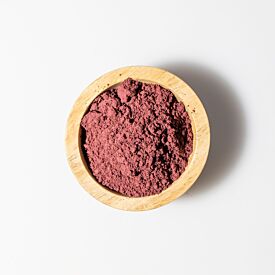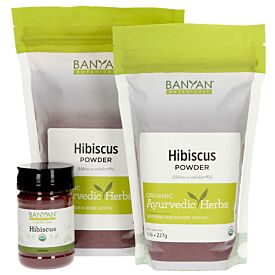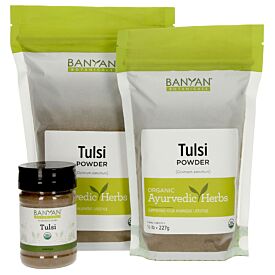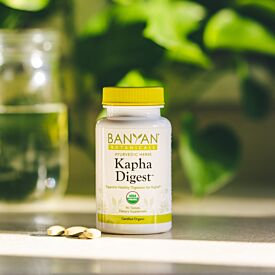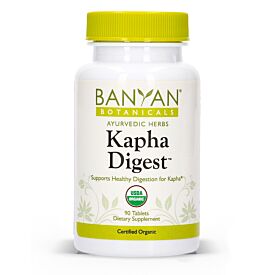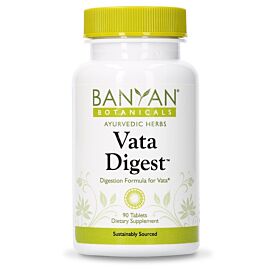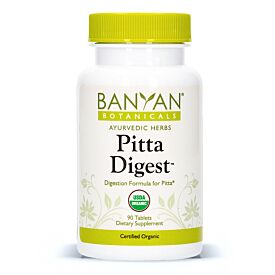Herbal Sun Tea for Late Summer
In the Ayurvedic classics, it is said in one way or another that “the closest medicine is the best medicine.” When it comes to making sun teas, ideally you are using freshly picked herbs—and when you’re getting fresh herbs, you’re probably getting them local as well. The best time of the year for fresh herbs is summer, and the latter end of summer offers a particularly beautiful selection to choose from.
The subtleties of the seasonal shifts are going to be different depending on where you live. In late summer, around mid-July through early September where I live, the sun is still quite strong, influencing pitta. Yet, there is an underlying feeling of vata in the cool nights and erratic thunderstorms. Choosing nourishing herbs that have some sweetness as well as astringency will gently balance both vata and pitta. Cooling aromatics from the mint family will help soothe and cool, yet also enhance digestion.
So, why sun teas? Sun teas soak up the solar energy, which in moderate amounts is nourishing and strengthening to the system. Sun bathing is balancing for vata and kapha dosha, and with long, cold winters here in the north, I will soak up all the sun I can get, while I can get it.
Some important notes for making sun tea:
High quality is a priority. Be sure to pick herbs where you know they have NOT been sprayed with chemicals, and choose herbs that are NOT by roadsides, where exhaust from vehicles can cover them. If you can’t pick your own, ask a reliable friend or purchase organic herbs from a farmer’s market or grocery store.
Be sure to properly identify your herbs. If you are unsure, “when in doubt, don’t.” There are very few dangerous or poisonous herbaceous greens, but it will still serve you to get some help with identification (and your teas will taste better).
How to make sun tea:
- Clean a large (one quart or half gallon) mason jar and lid.
- Gather herbs, and rinse them to remove bugs and debris. When using fresh herbs, fill your jar almost to the top. If using dried, use about 1–2 tablespoons of each herb.
- You may fill your jar with either boiling water or fresh water. If boiling, you will get a stronger steep. If using fresh water, the sun’s gentle warmth will make a lighter and more subtle tea.
- Cover tightly and set out in the full sun for 2–8 hours.
- Strain and enjoy gently warm or over ice.

Sun Tea Recipes:
Anise Hyssop and Spearmint
Anise hyssop has a subtle licorice-like flavor, and spearmint is a gentle and unique mint. The plants look a lot alike, so I feel like they just want to go together! Both have furry leaves and flowers—feel free to pick and use those in the jar as well. Pick enough to fill your jar, and let them steep for 6–8 hours before drinking.
Pineapple Sage and Fresh Ginger
There are quite a few herbs that have been bred for distinct flavor, and pineapple sage is one of those herbs that has a fruity aroma combined with the earthiness of sage. For added sweet and bitter, as well as digestive benefits, chop some fresh ginger to add to your concoction.
Beebalm and Lemonbalm
One of my favorite flowers, bee balm, though it can be found in a number of colors, is usually a red-topped, mop headed beauty. The plant is also called “oswego” and has been used by First Nations peoples throughout their history for a variety of purposes. This flower is from the mint family, and combined with a light, fresh lemon balm, it makes a gentle tea that is excellent for soothing the mood and supporting digestion.
Red Clover and Raspberry Leaf with Fresh Honey
July and September are honey-harvesting times for us. And during this time, the red clover is proliferating in our fields. The bees have spent the last months gathering from it, and the flowers with their nectar are the perfect sweet and slightly astringent combination. Fill your jar with fresh herbs, or use about 1 cup dried flowers and 1 tablespoon dried raspberry leaf. Use cool water when preparing this tea so the honey does not get cooked. Shake the jar a few times before setting in the sun.
Hibiscus and Rose Hips
Most likely, you will be using dried hibiscus flowers for your tea, but it is possible to use fresh rose hips. This tea will turn a fantastic red color while offering a slightly sweet, sour, and astringent taste. Both herbs are wonderfully boosting to the immune system, supportive of the heart, and balancing for pitta dosha. Think nature’s fruit punch!



